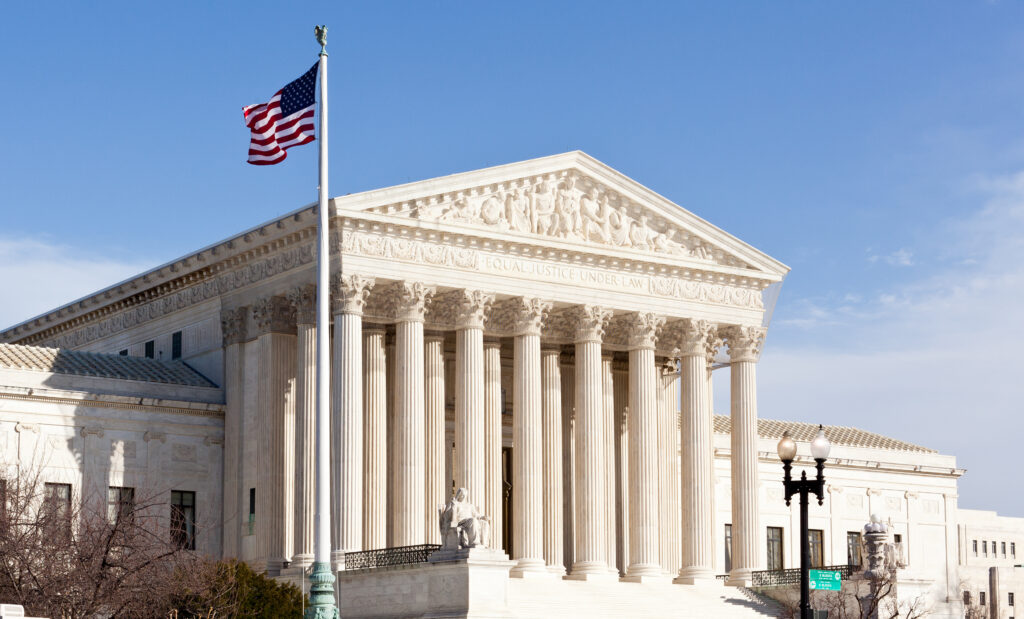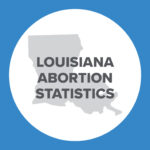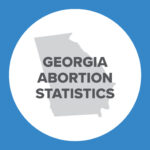Women’s Health Protection Act: An Analysis

By Anna Higgins, J.D.
This is Issue 67 of the On Point Series.
If the “Women’s Health Protection Act of 2021” were to become law, it would impose abortion on demand in all 50 states by invalidating current state laws and undermining the ability of states to pass limits on abortion. These state laws which were enacted by duly elected state officials accountable to citizens of their state reflect the view of a majority of Americans who support limitations on abortion. The “Women’s Health Protection Act of 2021,” more accurately referred to as the “Abortion on Demand Until Birth Act,” represents a federal takeover of abortion policy by nullifying the will of citizens and state legislatures. The first version of the Women’s Health Protection Act was introduced in 2013. It has been introduced in subsequent Congresses and has failed to advance each time.
With the Supreme Court set to hear arguments in the Dobbs late-term abortion case, regarding the 15-week abortion restriction instituted in Mississippi, and in light of the Supreme Court’s decision not to issue an injunction against the Texas “heartbeat bill,” the liberal Members of the 117th Congress are seeking to advance this abortion-until-birth bill in an effort to abolish the legislative pro-life gains in states over the last several decades. This attempt to unravel those commonsense state restrictions on abortion only undermines efforts to protect women and unborn children from the harms of abortion.
The bill claims that the federal government has the power to enact the stated purposes of this bill by invoking
Congressional authority, including the powers of Congress under the commerce clause of section 8 of article I of the Constitution of the United States, its powers under section 5 of the Fourteenth Amendment to the Constitution of the United States to enforce the provisions of section I of the Fourteenth Amendment, and its powers under the necessary and proper clause of section 8 of article I of the Constitution of the United States.
The commerce clause has historically been used as a method of gaining some federal control over issues that are generally reserved to the states. For the federal government to be permitted to overrule state restrictions on abortion, Congress must show that interstate commerce is implicated in the practice of abortion and that abortions affect interstate commerce and necessary goods and services. As justification for federal control, the bill claims that people traveling across state lines engage in interstate commerce “to access this essential medical care;” that “health care providers” likewise engage in interstate commerce to provide abortions; abortion providers engage in “economic and commercial activity when they provide abortion services, and there is an interstate market for abortion services.” It is a stretch to claim each and every regulation on the provision of abortions rises to the level necessary to qualify as substantially affecting interstate commerce. These assertions, lacking quantitative data to support them, would be heavily scrutinized in a court of law.
The bill also claims Congressional precedent exists for enacting limitations on state law, citing the Freedom of Access to Clinic Entrances Act (Public Law 103-259; 108 Stat. 694). This law was enacted as a response to abortion center blockades and “associated violence.” State restrictions on abortion such as a waiting period, informed consent, parental consent for a minor, late-term abortion bans, hospital admitting privileges for abortionists, and the like, however, are practically and legally distinct from violent confrontations at the doors of abortion centers.
The operative language of the bill cuts at the heart of a state’s ability to enact any meaningful restriction on abortion by providing a statutory right for an abortion provider to perform an abortion and for a pregnant woman to obtain an abortion without common protective restrictions currently in place in many states. Those prohibited “limitations” include a requirement that the abortion provider perform any specific tests or medical procedures prior to the abortion, which would affect state provisions requiring abortion providers to perform an ultrasound to determine the gestational age of the unborn child or ultrasounds for the purpose of obtaining fully informed consent from the pregnant woman. The bill would lift regulations on provision of abortion services via telemedicine – except those limitations generally applicable to provision of medical services not for abortion via telemedicine. It would invalidate state requirements for transfer agreements with hospitals and requirements that an abortion provider have hospital privileges, requirements that the pregnant woman make more than one visit to the abortion provider, and any prohibition on abortion prior to viability or restrictions on a particular abortion procedure – among several other limitations on current state laws that regulate abortion. Additionally, the bill provides that the abortion provider and woman receiving the abortion have a statutory right to be exempted from any regulations or requirements that “single out” the provision of abortions or impede “access to abortion services.”
In considering whether a limitation or requirement “impedes access to abortion services,” a court may take into account numerous factors no doubt meant to invalidate most if not all state limitations on abortion. A court may consider whether the limitation would deter or delay a woman from obtaining an abortion, whether it would increase the cost of an abortion, whether it would require a visit to a health care provider that would not otherwise be required, whether it would decrease the availability of abortion services in a geographic region or State, whether it imposes penalties on abortion providers not imposed on other health care providers, and the cumulative impact of the regulation along with other regulations.
The bill also requires that limitations on abortion meet a very strict legal standard. In a legal challenge, the burden of proof is placed on the state to show by clear and convincing evidence that the limitation “significantly advances the safety of abortion services or the health of patients; and the safety of abortion services or the health of patients cannot be advanced by a less restrictive measure or action.”
The provisions of the proposed law would supersede current and future federal and state law, including the Religious Freedom Restoration Act. The only exceptions to that provision are the ban on partial-birth abortion, laws regulating physical access to abortion centers, insurance or medical coverage of abortions, and state contract law. For example, unless exempted under the insurance or medical coverage of abortions provision, the Hyde Amendment, which prohibits taxpayer funding of abortion, would be struck down if it was determined to increase the cost of abortion or “limit access” to abortions.
The substantive provisions of this bill would work to invalidate current state law and undermine the ability of states to implement commonsense restrictions on abortion. Under the proposed bill language, waiting periods, ultrasound requirements, informed consent, telemedicine bans, hospital transfer agreements, hospital admitting privileges, parental consent, and multiple other reasonable regulations on abortion would be struck down.
The legislative findings in the bill are equally disturbing in that they work to provide justification for abortion on demand in every state without restriction prior to viability and with minimal restriction post-viability.
This bill begins by finding that, “Abortion services are essential to health care and access to those services is central to people’s ability to participate equally in the economic and social life of the United States.” This statement implies that mothers are not able to participate equally in economic and social life. In fact, “There is evidence that widely available abortion has disadvantaged women.”[1] Studies that claim abortion leads to more equality for women are usually written by abortion proponents. They are often “riddled with scientific flaws” and ignore variables such as the “vast number of cases and laws powerfully fostering women’s social equality.” Additionally, “precipitous declines in abortion rates…and ratios… have accompanied dramatic rises in women’s educational, economic and other societal gains.”[2]
The bill states that the Court has recognized “the constitutional right to terminate a pregnancy before fetal viability, and to terminate a pregnancy after fetal viability where it is necessary… .” It fails to note the Court’s determination that states have an interest in the life of the unborn child and mother from the outset of pregnancy, and thus have the right to regulate abortion prior to viability as long as that restriction does not place a substantial obstacle in the path of a woman seeking an abortion prior to viability. The Court has also expressed that states have the right to prohibit abortion at and after viability. The bill also fails to mention the fact that abortion does not qualify as a “fundamental” right, according to Supreme Court rulings.
The findings in the bill also reference “medically unnecessary regulations” – a phrase which appears to apply to most if not all restrictions on abortion enacted by the states. The bill goes on to discuss “Reproductive Justice” in detail, noting, that “Reproductive Justice is a human right” that can only be achieved when all people – regardless of race, gender identity etc. – can make decisions about “their bodies.” Abortion, however, necessarily involves two individuals – the mother and the unborn child; thus “Reproductive Justice” is actually unjust in that it would confer and recognize “rights” of bodily autonomy only to the pregnant woman and not the unborn child.
According to the findings, “Reproductive justice seeks to address restrictions on reproductive health, including abortion, that perpetuate systems of oppression, lack of bodily autonomy, white supremacy, and anti-Black racism.” The idea that restrictions on abortion harken back to past oppression of minorities is outdated and incorrect. In fact, the abortion industry disproportionately preys on minority women and minority communities, as the black abortion rate has been three to four times the white abortion rate for the past three decades.[3] In addition, according to the Centers for Disease Control and Prevention (CDC), 34% of abortions reported by race were performed on non-Hispanic black women, even though non-Hispanic black women make up just 15% of all women ages 15-44 in the U.S.[4]
The bill laments that restrictions on abortion are “medically unjustified” and asserts their removal would help restore “Reproductive Justice.” Furthermore, the findings state that “Abortion is essential health care and one of the safest medical procedures in the Unites States” and that state regulations create “barriers to care” which constitute a threat to the quality of abortion services. Specifically, the bill claims that current abortion restrictions “conflict with medical standards.” The reality, however, is that abortion, especially later-term abortion, carries with it significant risks to the health and life of the mother. Beyond potential physical complications, abortion has been shown to have significant negative psychological effects.[5] The claim that abortion is safer than childbirth is outdated and incorrect.[6] Common-sense abortion restrictions enacted by states work to protect the life and health of the mother by ensuring that abortion providers are properly qualified, that women are properly informed of the nature of the procedure and risks, and that abortion facilities comply with similar safety and sanitary requirements affecting other types of medical facilities.
In order to protect women from the harmful nature of abortion and to protect unborn children from being aborted, states have enacted numerous restrictions on the procedure. This bill claims that the cumulative effect of those restrictions severely limits access to abortions such that abortion services are more available in some states than in others. This “access issue” is viewed by the authors of the bill as a serious violation of the “Reproductive Justice” concept. Throughout the country, Federally Qualified Health Care Centers[7] and Pregnancy Medical and Resource centers have proliferated – giving women the opportunity to obtain low-cost and free medical care, pregnancy options counseling, parenting classes, and material support. With this type of care and support available, fewer women are likely to seek out abortion “services.” If the goal of this bill is keeping women safe and making sure they are able to participate fully in society, providing women with options, care, and support rather than more abortion facilities should be prioritized.
The United States is one of very few countries in the world to allow elective abortion past 20 weeks’ gestation,[8] a group of countries that includes persistent human rights violators North Korea and China. Despite the fact that our nation’s policies on abortion are far more liberal than the majority of countries, the bill goes on to state that international human rights law requires the United States to provide on-demand access to abortion and that the United Nations expressed concerns that women in the U.S. face excessive obstacles to abortion. This ignores a reality that the majority of European nations limit elective abortion at 12 weeks,[9] and would preclude any similar restrictions in America based on the scientific advancements in understanding the life of unborn children. The bill also claims that “International human rights law recognizes that access to abortion is intrinsically linked to the rights to life, health, equality and non-discrimination, privacy, and freedom from ill-treatment,” and that the International Covenant on Civil and Political Rights (ICCPR), ratified by the United States, “at a minimum requires governments to provide safe, legal, and effective access to abortion where a person’s life and health is at risk, or when carrying a pregnancy to term would cause substantial pain and suffering.” According to Doe v. Bolton, 410 U.S. 179. (1973), the definition of “life and health” is broad. It extends to mental well-being as well as familial situations. As stated above, abortion actually causes and exacerbates a wide array of mental disorders. Situations in which a pregnant woman’s life is not in danger but in which she is struggling emotionally or physically should be dealt with, not by increasing access to abortion, but to actual health care and pregnancy-related counseling and parenting training. We also know that legalized abortion has led to a global crisis in which girls are being aborted at higher rates than boys.[10] International human rights law should be addressing that egregious inequality and asserting prohibitions of abortion on the basis of sex.
The introduction of such an extreme abortion protection bill in Congress is, again, a response to the significant pro-life gains throughout the country in recent years. If passed, this bill would strike at the heart of the efforts to protect women and children from abortion. The Supreme Court’s decision in Dobbs and any future cases will be of the utmost importance in defining a state’s role in passing laws that place limits on abortions. A Supreme Court decision to return abortion regulation to the states would work to prevent Congress from abusing its power to strike down those regulations. It is clear Speaker Pelosi and Leader Schumer want to use their current power in Congress to expand federal powers and advance an extreme abortion agenda, thwarting the will of the American people and the authority of states across the country.
Anna Higgins, J.D. is an associate scholar at the Charlotte Lozier Institute.
[1]Amicus Brief of 240 Women Scholars and Professionals, and Prolife Feminist Organizations in Support of Petitioners, Dobbs v. Jackson Women’s Health Organization, https://www.supremecourt.gov/DocketPDF/19/19-1392/185586/20210803111413494_19-1392%20Brief%20of%20240%20Women%20Scholars%20et%20al%20In%20Support%20of%20Petitioners%20REPLACEMENT%20COPIES.pdf
[2] Id. At 18.
[3] Studnicki J, Fisher JW, Sherley JL. Perceiving and Addressing the Pervasive Racial Disparity in Abortion. Health Serv Res Manag Epidemiol. 2020;7:2333392820949743. Published 2020 Aug 18. doi:10.1177/2333392820949743. https://www.scirp.org/journal/paperinformation.aspx?paperid=41850; See also Donovan C, Parker S, “Repealing the Hyde Amendment would endanger black babies,” March 2021, Washington Examiner. https://www.washingtonexaminer.com/opinion/op-eds/repealing-the-hyde-amendment-would-endanger-black-babies.
[4] Kortsmit K, Jatlaoui TC, Mandel MG, et al. Abortion Surveillance — United States, 2018. MMWR Surveill Summ 2020;69(No. SS-7):1–29. DOI: http://dx.doi.org/10.15585/mmwr.ss6907a1; CDC WONDER Online Database. Accessed on Sep 17, 2021. https://wonder.cdc.gov/controller/saved/D163/D225F184
[5] “2010 Canadian study reaffirms a wide range of mental health problems associated with induced abortion,” AAPLOG, https://aaplog.org/2010-canadian-study-reaffirms-a-wide-range-of-mental-health-problems-associated-with-induced-abortion/; Reardon DC. The abortion and mental health controversy: A comprehensive literature review of common ground agreements, disagreements, actionable recommendations, and research opportunities. SAGE Open Medicine. January 2018. doi:10.1177/2050312118807624
[6] “Abortion is Not Safer for Women than Childbirth,” National Institute of Family and Life Advocates, https://nifla.org/abortion-not-safer-women-childbirth/
[7]“Fact Sheet: Reallocating Planned Parenthood’s Federal Funding to Comprehensive Health Centers.” Charlotte Lozier Institute, March 2017. https://lozierinstitute.org/fact-sheet-reallocating-planned-parenthoods-federal-funding-to-comprehensive-health-centers/
[8] Angelina B. Nguyen, “Gestational Limits on Abortion in the United States Compared to International Norms,” February 2014, Charlotte Lozier Institute, American Reports Series Issue 6. https://lozierinstitute.org/internationalabortionnorms/
[9] “New Study: Mississippi’s 15-Week Limit on Abortion in the ‘Mainstream’ of European Law – Charlotte Lozier Institute,” July 2021. https://lozierinstitute.org/new-study-mississippis-15-week-limit-on-abortion-in-the-mainstream-of-european-law/; Angelina B. Nguyen, “Mississippi’s 15-Week Gestational Limit on Abortion is Mainstream Compared to European Laws,” July 2021, Charlotte Lozier Institute On Point Series 63. https://lozierinstitute.org/comparing-mississippi-limit-with-european-laws/
[10] Anna Higgins, “Sex-Selection Abortion: The Real War on Women,” April 2016, Charlotte Lozier Institute, American Reports Series, Issue 11. https://lozierinstitute.org/sex-selection-abortion-the-real-war-on-women/























